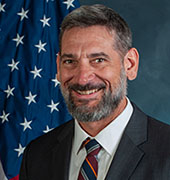
U.S. Arctic Interests
Climate change has led to record low levels of Arctic ice—expanding economic opportunities as well as safety risks.
Environmental changes in the Arctic can create both economic opportunities and challenges. As Arctic waterways become more accessible (due to declining sea ice), the region has attracted greater global attention for its economic opportunities. For instance, it contains an estimated 13% of the world's undiscovered oil, 30% of the undiscovered gas, and some $1 trillion worth of gold, zinc, nickel, and platinum. Melting sea ice could also increase the use of three trans-Arctic routes—the Northern Sea Route, Northwest Passage, and Transpolar Route—which could save several thousands of miles and several days of sailing between major trading blocs.
At the same time, recent environmental changes have created challenges for the people living in the Arctic and the ecosystem upon which many of them rely. Since 2003, Alaska state officials have identified the growing effects of climate change in Alaska—which include melting polar ice, increasing storm intensity, and coastal flooding. For example, coastal erosion has threatened many Arctic Alaska Native villages. Flooding and erosion have caused millions of dollars of property damage in these villages and, in some cases, pose imminent threats to lives, homes, and infrastructure. This has increased the urgency of federal and state efforts to identify imminently threatened villages and assess their relocation options.
Flooding in the Village of Golovin, Alaska (c. 2005)

Federal responsibilities
A number of federal agencies have Arctic roles and responsibilities ranging from scientific research to resource development. For instance, the National Oceanic and Atmospheric Administration is working to chart Arctic waters. However, the U.S. Coast Guard is the primary federal maritime agency in the Arctic. And as more navigable ocean water emerges in the Arctic and human activity increases, the Coast Guard expects to face expanding responsibilities in the region.
The Coast Guard’s heavy polar icebreakers can ensure year-round access to the Arctic—critical to protecting U.S. economic and national security interests in the region. However, the Coast Guard’s only operating heavy polar icebreaker, the Polar Star, is near the end of its service life. The Coast Guard is working to acquire its first new heavy polar icebreakers in over 40 years, at an estimated cost of over $9.8 billion. It plans to acquire the first of three such ships in FY 2023 (although the planned delivery dates for these ships are not based on a realistic schedule). The Coast Guard is also taking steps to extend the service life of the Polar Star until it acquires the new fleet.
Coast Guard’s Heavy Polar Icebreaker, the Polar Star

National strategy
To guide federal efforts, the White House developed a National Strategy for the Arctic Region in 2013 and established an interagency Arctic Executive Steering Committee (AESC) in 2015. The strategy articulates the administration’s strategic priorities for the Arctic, including efforts to advance U.S. security interests, pursue responsible Arctic stewardship, and strengthen international cooperation.
The United States also coordinates with other Arctic countries—Canada, Denmark, Finland, Iceland, Norway, Russia, and Sweden—and indigenous organizations through the Arctic Council, a voluntary intergovernmental forum focused on environmental and economic development issues.
However, agency officials and stakeholders noted that the national strategy is now outdated due to changing conditions in the Arctic. Moreover, the AESC is now dormant, and the White House has not designated an entity to lead and coordinate federal Arctic maritime efforts. Without a current strategy and a designated interagency entity, agencies may miss opportunities to leverage resources and target infrastructure improvements to help U.S. Arctic interests.





